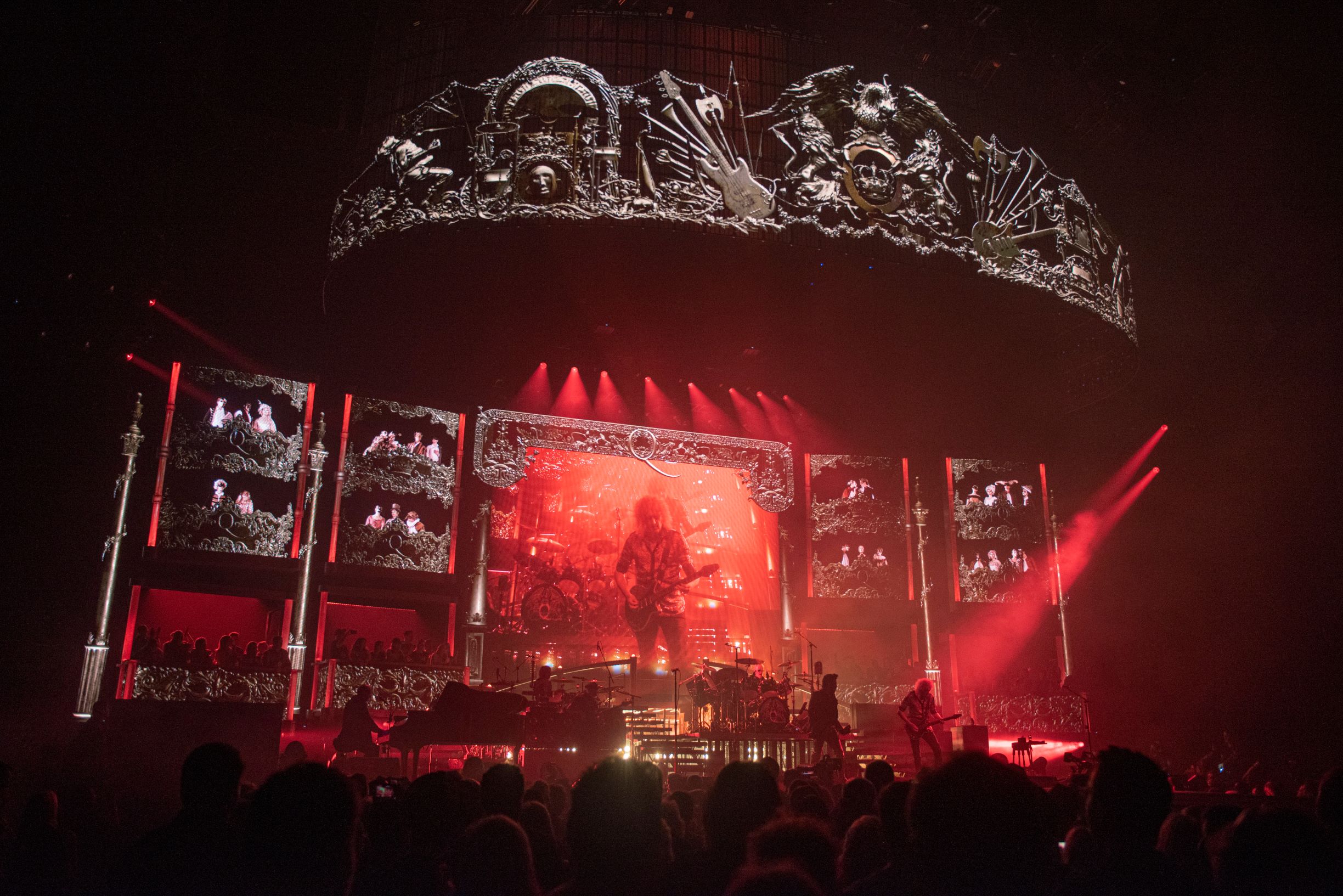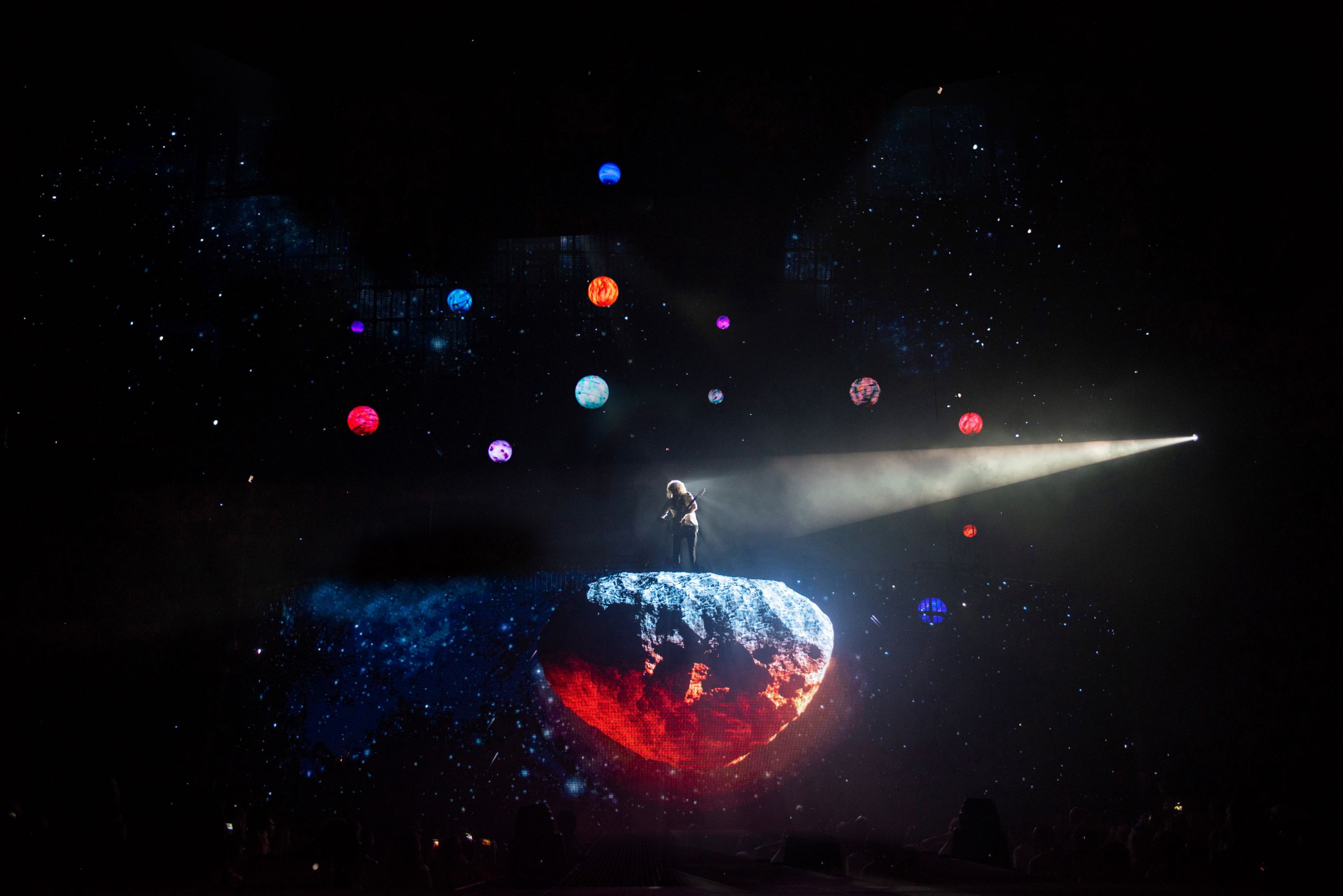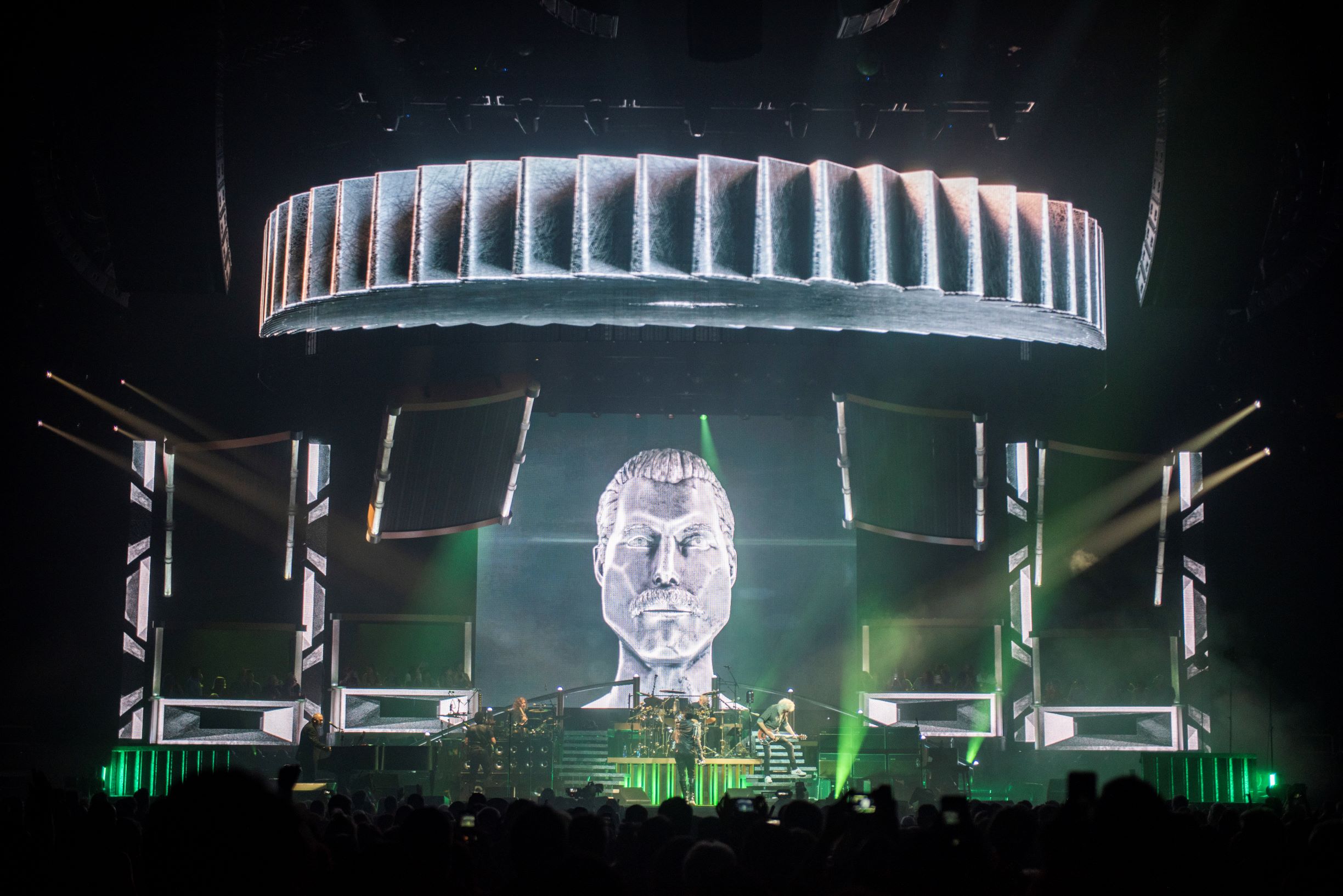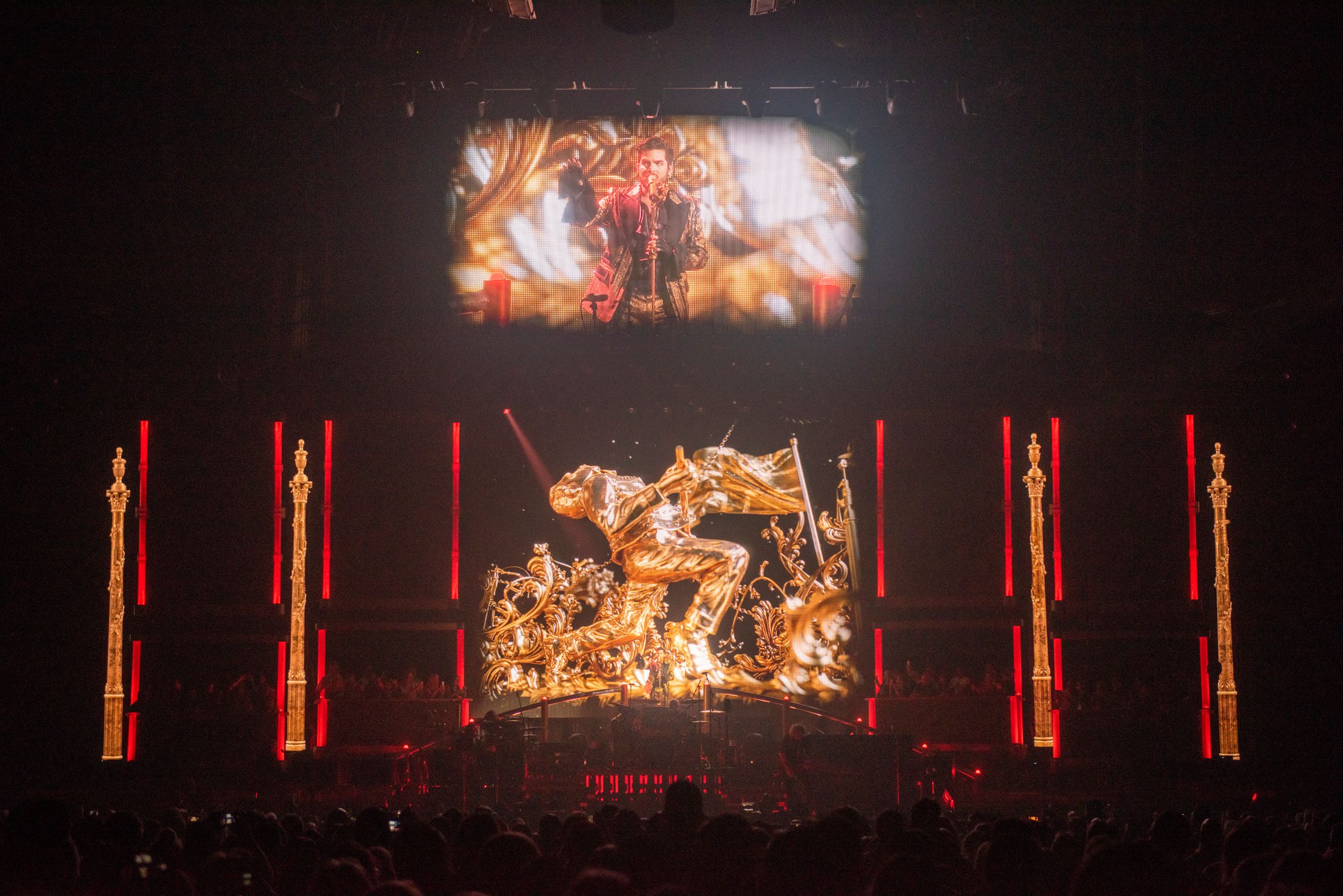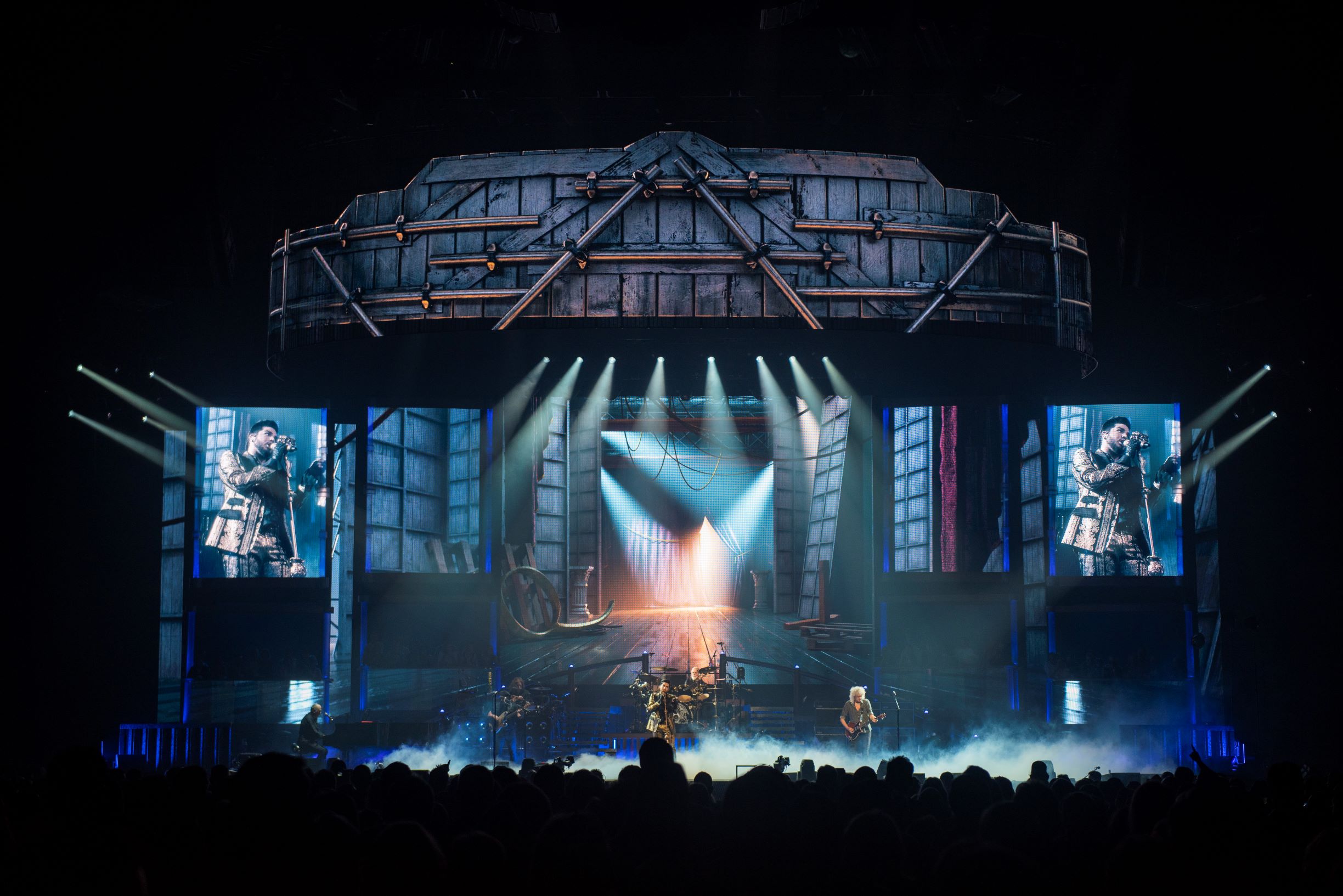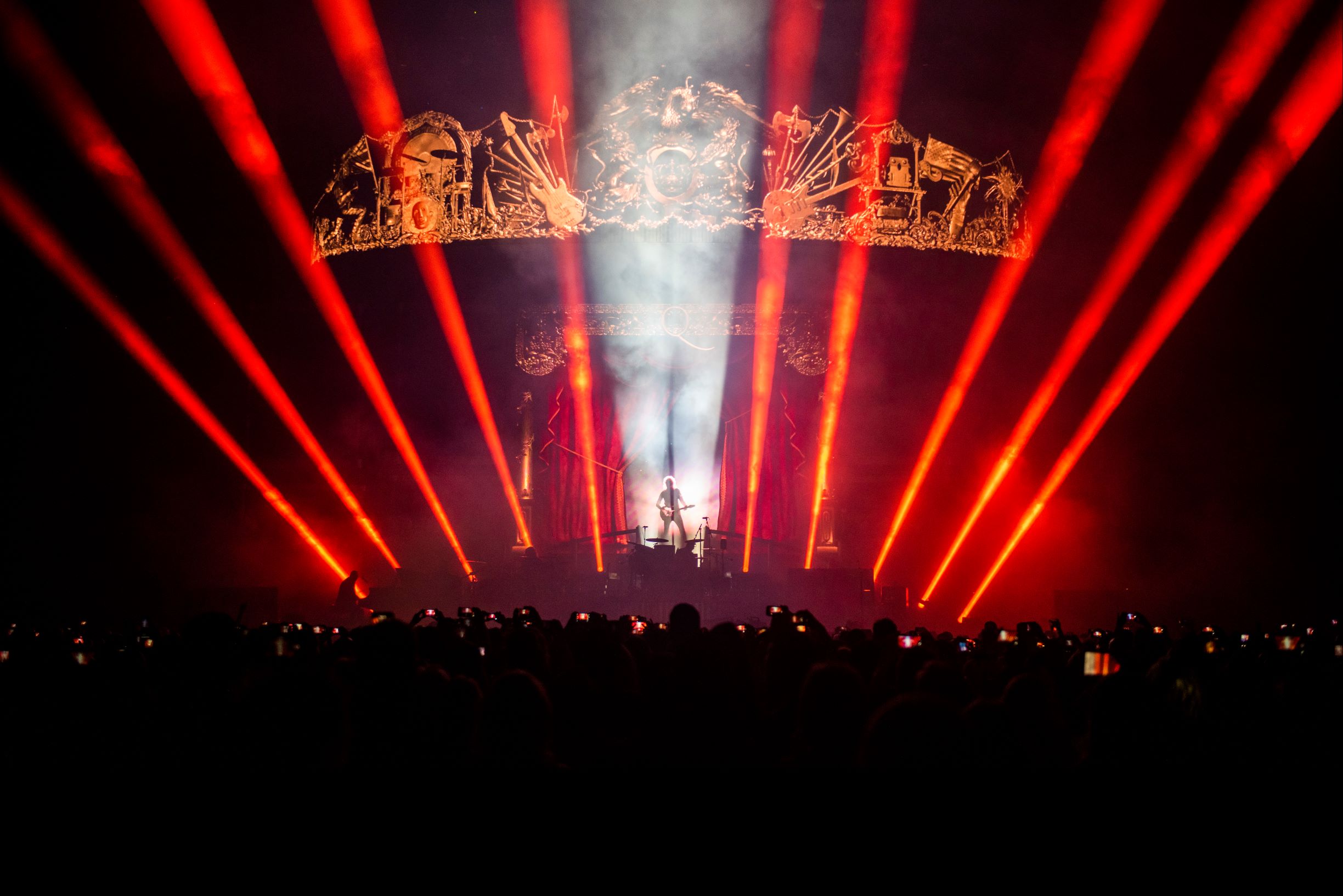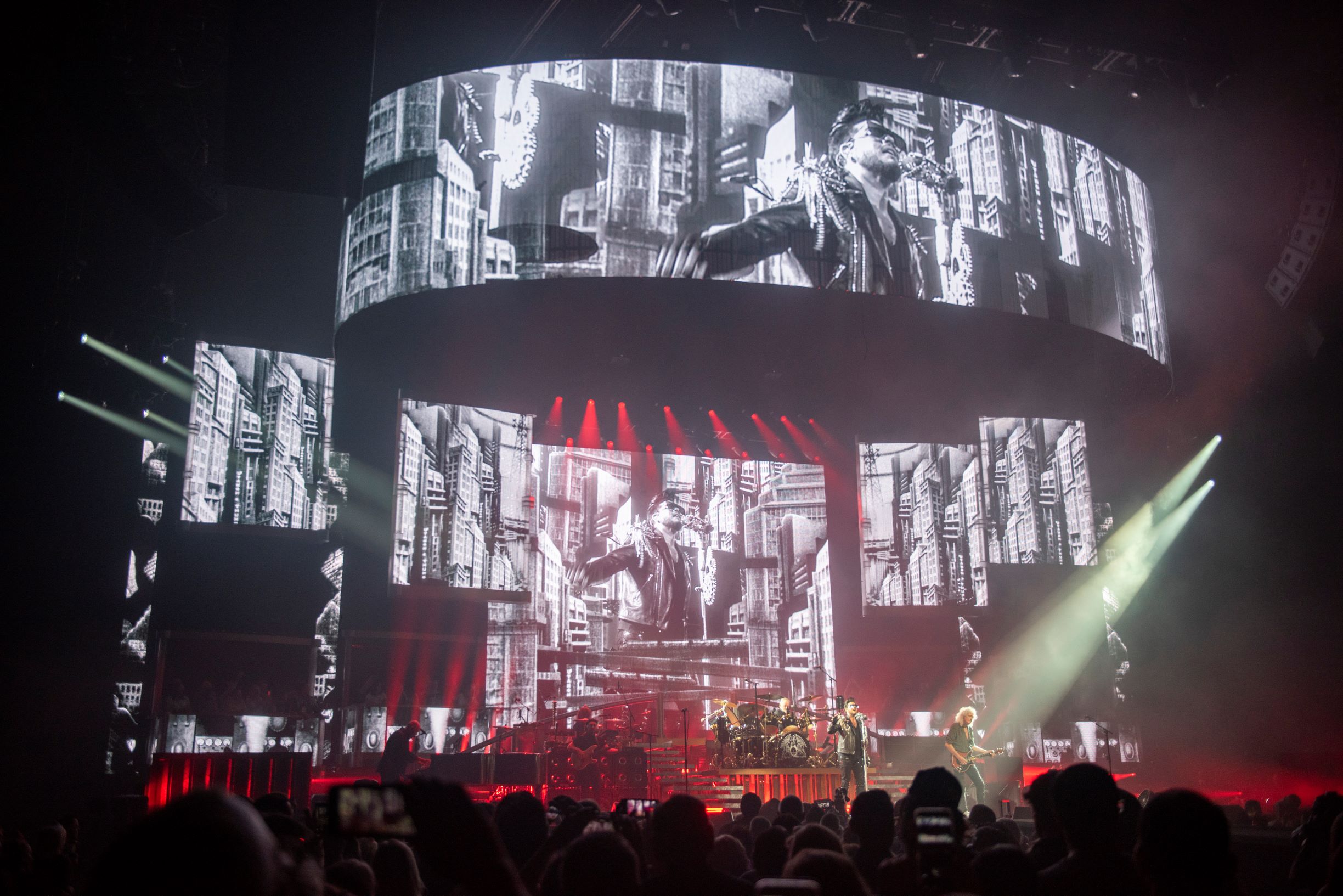Project Description
“Working in Notch resulted in organic programming of virtual lighting.”
Queen + Adam Lambert bring a rock and roll Opera House on the road with them for their ongoing tour: Rhapsody. Treatment, working with designer Brett Bolton, created the spectacular 3D set in Notch. This full production seamlessly combines physical and digital scenery through brilliant use of virtual lighting. Producer Giles Maunsell and Designer Brett Bolton describe their creative process:
.
Giles Maunsell, Producer, Treatment
“I’ve been working with Treatment for two years now, with a background before that in music videos and live event production. Treatment have been producing visuals for Queen + Adam Lambert since 2016. I produced visuals for their Crown Jewels show in Las Vegas in 2018, as well as the Rhapsody Tour in 2019.”
.
Brett Bolton, Freelance Designer
“I’m a freelance motion graphics designer and musician from Las Vegas, Nevada. I grew up playing in bands and became obsessed with creating visuals for my live shows. When I made the switch to focus on concert visuals in 2015, I was lucky to be hired on by Treatment to create content for a few of the shows they produced.”
Vision
Giles: “We set out was to create a show in three distinct acts. Each act covers a different era from Queen’s history: A Night at The Opera, The Works, and a contemporary rock show with nods to classic Queen shows. Instead of a static backdrop, we envisaged a dynamic 3D environment which could react to the music and work seamlessly with Rob Sinclair’s lighting, and Ric Lipson’s set-design.”
“Using the three-act structure, we were able to explore novel ways of adding musicality to the pieces. During the first ten songs which make up Act 1, we wanted to transport the audience to an opera house. We didn’t want this to be any old baroque opera house. Our goal was to create a rock n roll Queen opera house, with references to Queen history and iconography.”
“We wanted the video and lighting teams to have control over certain 3D elements within each scene so that during the live performances, they could react to the energy of the music. At this point, we did not know what was possible within Notch. However, we knew we wanted to use dynamic virtual lighting to blur the lines between the physical and the digital set design. Incorporating a combination of rendered and live video into our 3D set design was integral to our vision, so we set about making it happen.”

Production
Brett: “We began by testing original, high-poly models of the opera house in Notch to see what was possible. Initial testing was working well in real-time. Still, we knew we’d have to optimize to make things run in a media server and look as beautiful as our concept renders.”
“Chris Cousins did an incredible job building and optimizing the Opera House meshes he created. Since the opera house was static, we were able to get away with turning each fixture into planes. We used normal mapping to cheat the depth and shading of the textures. That freed up a bit of performance for other features we wanted to add.”

“Once we got onsite for rehearsals, Ed White and I were able to put things to the test by trying out different Notch Block set-ups in the gx2. We worked together to ensure Ed had control of the features he needed for the virtual lights. The set-up we chose gives Ed individual control of pitch, heading, cone angle, brightness, and colour of 12 virtual lights. He is also able to animate individual pieces of the opera house in and out all from his grandMA or disguise.”
“I got way too much joy out of walking into rehearsals and watching Ed control the virtual lights from his console as if they were real lights. Seeing the virtual lights fade up and move along with the physical stage lights really creates the illusion of a physical set.”
“With a traditional workflow, we would’ve had to have each lighting look predetermined and rendered out. Working in this way would not have been possible with the timeline and amount of changes that happen during concert rehearsals.”

“Instead, we were able to rig a comprehensive Notch system that gave full animation control to a lighting desk. Working in Notch resulted in organic programming of virtual lighting, which worked in harmony with the physical lighting.”
Giles: “The Opera House looked absolutely stunning. The real-time lighting on the 3D model was, at times, genuinely indistinguishable from the physical set. I feel we successfully transported the audience to a Night at the Opera. Working in this way has opened up all sorts of ideas for the future.”
Credits:
Client: Queen + Adam Lambert, Miracle Productions
Production Company: Treatment Ltd
Creative Direction: Treatment Ltd
Video Producer: Giles Maunsell
Notch Designer: Brett Bolton
Production Designer: Ric Lipson at Stufish
Lighting Designer: Rob Sinclair
Animators: Chris Cousins, Susana Yamamoto, Kooch Chung, Noah Campeau, Sam Munnings, Henrique Ghersi, Luis Ribeiro, Mark Hough
Media Server: disguise gx2
Media Server Programmer: Ed White
Photos: Stufish
